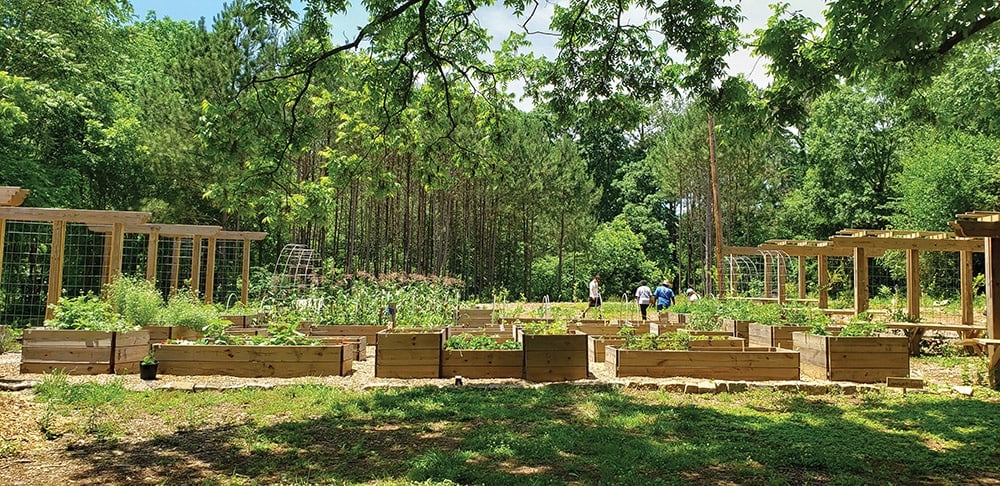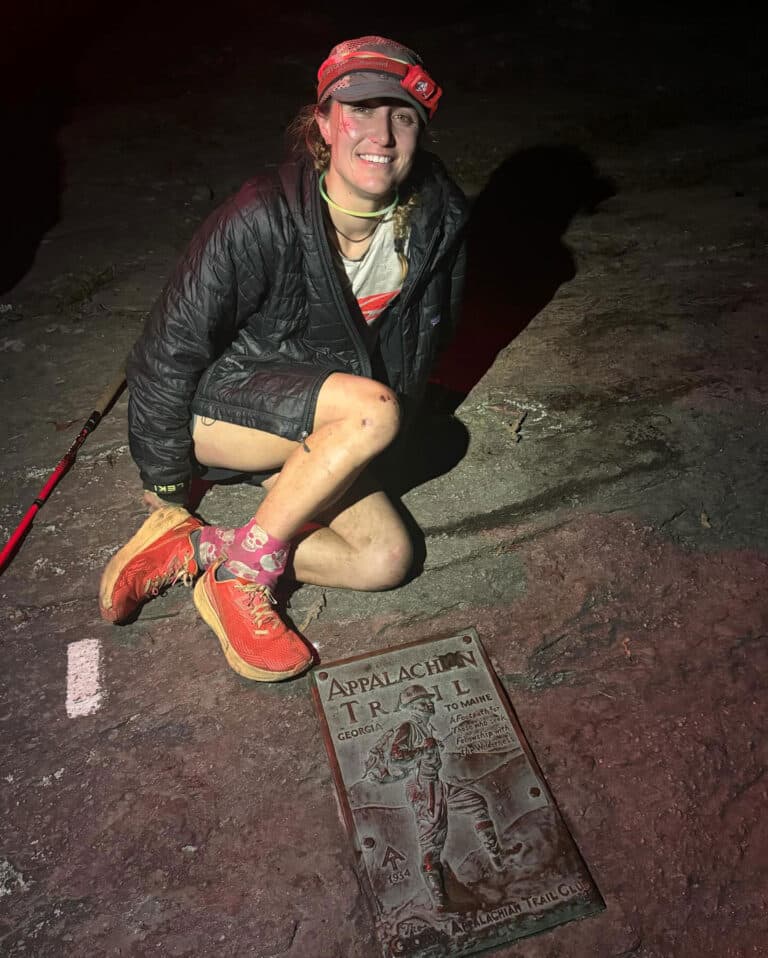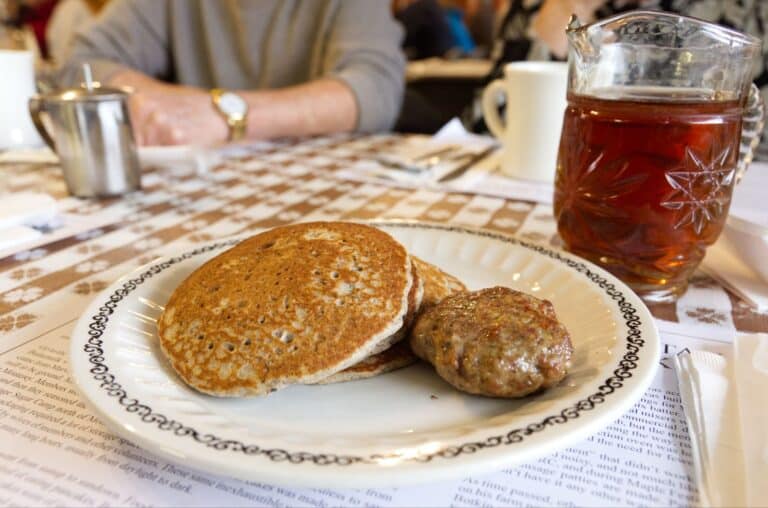Efforts in Southern Cities Reconnect People to nature through food.
Photo courtesy of The Conservation Fund
For thousands of years, the Southern landscape has provided the resources and tools to cultivate food from the earth. From the Indigenous peoples who first cared for the land to community gardens today, food has always been a way for us to connect with our surroundings and each other.
While local food movements have exploded in recent years, including a rise in farm-to-table restaurants and farmers’ markets, those resources aren’t accessible to everyone. Whether it’s cost, location, or time, the ability to grow your own food or buy locally is a privilege. As the executive director of Seedleaf, Christine Smith is trying to change that, working in her local Lexington, Ky., community to reconnect neighbors with their land in urban spaces.
“I think that we’re trying to challenge where the shift hasn’t happened in terms of the local food movement to make it more diverse,” she said. “Yes, there has been a major shift. But amongst the people we serve, that shift is still being developed.”
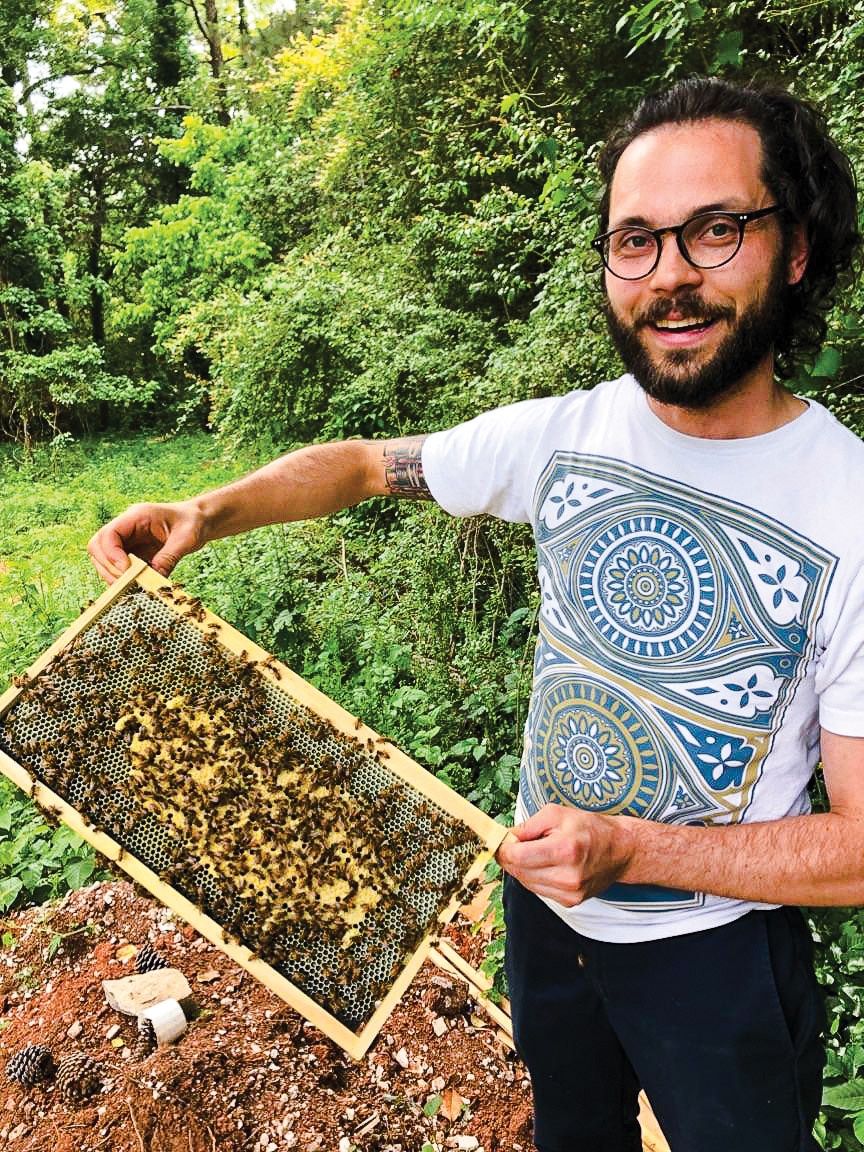
To get more people into the process of growing their own food, Smith focuses on demystifying gardening and rethinking what a garden actually looks like. “People say they don’t want to try gardening because they’ve killed a succulent before, or they don’t have any land,” she said. “So, it’s really focusing on clearing away the excuses why people feel afraid to try the act of gardening.”
For many people, buying a home is out of reach. So how can you get into the garden without a yard? Recently, shared opportunities in community gardens have become more prevalent, but Smith said people can also be creative with what space they do have. “We’ve been working with people to say you might not have land now, but you do have a windowsill,” she said. “Some of you have a balcony. You can get a container on your balcony, fill it with soil, and grow potatoes. You could do coffee beans or flower gardens.”
And once they have a garden going, Smith said many people aren’t sure what to do with their harvest once they’re done growing. “One of the things you find is that for new gardeners, they excitedly grow tons of tomatoes or tons of chard,” she said. “They have no idea what to do with it. Midsummer, they’re so tired of eating it that they stop tending to their garden. How can we preserve the harvest so that you’re not getting to a point where you’re sick of summer squash?”
Taking the First Step
At Seedleaf, Smith knows that not everyone in Lexington has the resources or wants to be a farmer in order to have fresh produce, so the organization manages 11 “you pick” gardens where community members have access to fresh produce as they need it. While the gardens are open 24/7, Smith said not everyone is comfortable with that concept.
“There’s this idea of property ownership, which is really hard to dislodge,” she said. “When you pass by these open garden spaces, people still feel pretty intimidated. Is this a place where we’re allowed to pick? Will we get in trouble? You could have signage for days, (but) there’s still people who are weary because in their mind, land is so tied up with one single owner. This idea of the common space is still kind of foreign.”
Ultimately, the goal is to get to the point where these gardens are no longer needed. “We need to grow more growers and not just grow food,” Smith said. “How do we grow these neighbors who one day can stop coming to these gardens and instead have a garden in a container on their balcony or in their backyard?”
Seedleaf offers a variety of ways to get involved with the food growing process, from beginner farming and horticultural training to summer programs for early teens. Attendees enrolled in the market gardener program learn the basics of growing produce for local markets. After completing the training, participants are given a plot of land to put their new skills to use.
“With so much being written about our current farming crisis where many of our farmers are dying off or there’s not enough people who know how to grow food, we’re hoping that this program can show what locally grown food can look like,” Smith said. “Food grown by our community and neighbors.”
It comes down to helping people get started on those first steps. Whether it’s learning how to design a garden, how to compost, or how to preserve food, it’s giving beginner gardeners the tools and resources to feel confident in their abilities.
“I think it’s about encouraging creativity, telling people that this isn’t rocket science,” Smith said. “They’re not going to be tested on this. You’re going to kill things. We all kill things. I’ve killed multiple things. Gardening is an act of patience and paying attention.”
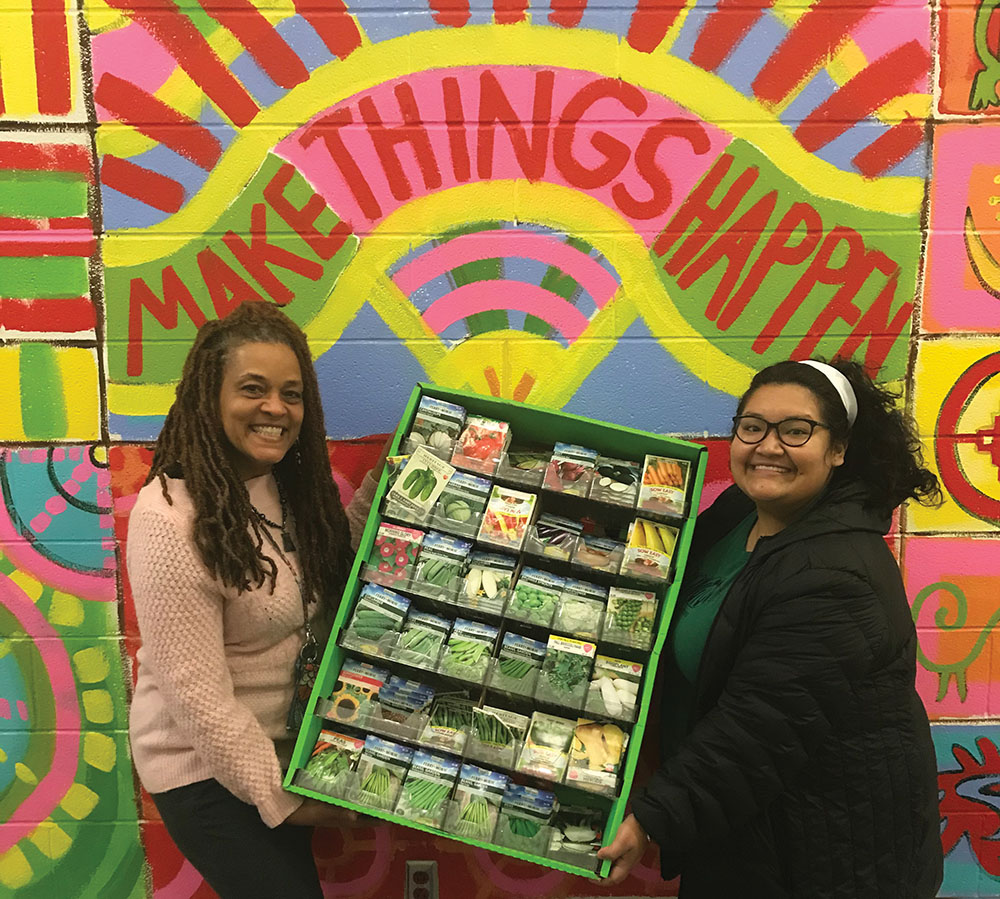
Creating a Space for Community
Attending naturalist and conservation workshops, Atiya Wells found she was often one of the only black participants in the class. When Wells started Backyard Basecamp in 2018, she wanted to create a space that was culturally relevant for communities of color.
“I found a lot of folks wanted a space that was for us, by us,” she said. “People were saying that they wanted to have people of color leading these nature-based classes. They wanted to have somewhere close in their neighborhood. Backyard Basecamp was really started to reconnect communities of color to nature in Baltimore city and the urban spaces.”
As the idea formed and started to take shape, Wells sought out a space where she could hold place-based classes and community events within the city of Baltimore. Just a few blocks from her house, she founded what is now BLISS Meadows.
Still in the second phase of development, BLISS (Baltimore Living in Sustainable Simplicity) is made up of 10 acres weaved together through public and private land. Plans for the property include trails, gardens, and orchards. A vacant house being renovated beside the property will be used for classroom space and eventually offerings could include evening storytelling or night hikes at a time when when most public parks are usually closed. When surveying neighbors on what they wanted to see at BLISS, Wells said the community had ideas for classes she hadn’t thought about.
“We didn’t have any green space in our neighborhood,” she said. “This is really what it looks like for a neighborhood to really invest in itself and create a place that is missing from within. Not that somebody came into the neighborhood and was like y’all need a park.”
With two ponds and a forested area already on the property, the Backyard Basecamp team has plans to enhance the natural elements in the area. The ecological design team is working to make sure they are farming in the way that the land wants to move, using slopes and heavy pooling to make proper use of the water stored on the property.
“We really wanted to work in tandem with nature, not against nature,” Wells said. “We’re not trying to push anything out. We’re actually trying to attract more biodiversity to the site.”
With the food-producing elements of the property, the idea is to go beyond just handing out bags of produce. Through a community kitchen, they can use their harvest to teach people how to prepare healthier meals. “What I’ve found is that it really does nothing to give people produce or to offer produce if they don’t really know what to do with it,” Wells said. “I’m all for eating healthy, but I need to know what it is, and I need to know how to make it. Is this something I’m supposed to eat raw? Am I supposed to cook it?”
But the community kitchen would go a step further in providing a space for people who would have no way to prepare those meals at home if their power or gas was off.
“All these things that we don’t think about as we call ourselves being helpful,” Wells said. “We don’t think about the other barriers that exist in someone else’s world for them to not live a healthier lifestyle. Some people think it’s a choice, that people are choosing not to do that. But there are a lot of systems in place that keep someone impoverished and keep someone from being healthy.”
With all of the programming, BLISS Meadows is meant to be a place for people to gather and enjoy the outdoors together. Ultimately, not everyone is ready to jump right into the backcountry and take off. “It’s kind of easing them into deep nature connection by starting with gardening,” Wells said. “When you’re out there, you can see other things that might interest you.”
Revealing the Landscape
Celeste Lomax started as a volunteer for the Urban Food Forest at Browns Mill in Atlanta.
“I live five minutes away,” she said. “A friend was telling me about the area and brought me over here. Things were actually dying. I took care of the herb space and the garden for the first year.”
Now Lomax is part of the team taking care of the space and engaging the local community with its resources. As someone who lives in the neighborhood, Lomax said she feels like she’s in a better position to connect with other residents about the project.
“This place is a healing place,” she said. “Unity is the main thing I would want people to get out of a space like this. We still have a few people that are skeptics. We’re trying to build trust. That’s the thing we’re working on now, doing outreach.”
In addition to the fruit and nut orchards, community garden plots, medicinal herb garden, and apiaries, the space is also a place for the community to gather and learn about the environment. Mario Cambardella, the former director of urban agriculture for the city of Atlanta, said creating the food forest has been an evolving process. There have been tough conversations between community members and local officials on what the role of the city should be in the space, creating guidelines and structure for the food forest, and mistakes that were made along the way.
While technically a public park, team members have emphasized that the food forest was designed for community members with limited access to fresh produce. As a former African American farmstead, the seven acres the food forest is now on has actually been providing food for generations, and now as the Browns Mill project, it is part of Mayor Keisha Lance Bottom’s goal to increase access to fresh food and food systems in the city.
“The city of Atlanta is a food forest,” Cambardella said. “The food forest is all around us in the Blue Ridge Mountains. Our southern Georgia landscape provides fruits and vegetables to not just us, but also birds and bees in the neighborhood. It’s really upon us to understand that food system and how that food cycle works. We only reveal the food producing landscape at Browns Mill.”
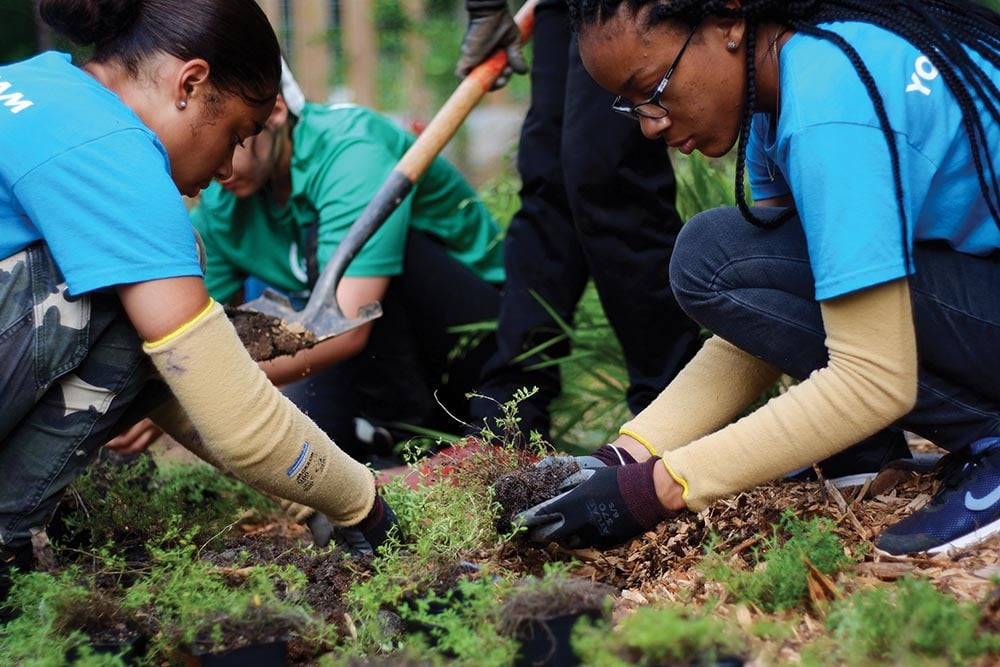
Defining Success
Ked Stanfield, director of Louisville Grows in Kentucky, sees the community garden as a way to connect people with each other and with where their food comes from. “I take the definition of a community garden literally in that the community itself has to be the primary focus, the plants being secondary,” he said. “A lot of times, the successful community gardens are the ones that have a good leadership structure and have engaged people. They help their neighbors in the garden, and then they’re more successful growing plants.”
Louisville Grows helps groups establish a garden through grants and training, working with community members on how to structure job roles within the space. “A lot of times, a garden leader will take on everything.” Stanfield said. “They’re the organizer, the composter, they’re pulling weeds, and mowing grass. They get burnt out, quit, and then nobody’s there to take it over.”
In 10 years, the organization has helped almost 30 gardens around the city of Louisville get started, and although some have come and gone in that time, many are still thriving. The most successful community gardens are the ones where everyone works together, pulling their weight and enjoying the fruits of their labor. And Stanfield said success isn’t necessarily measured by the pounds of produce grown. That number doesn’t tell the full story of what a space can provide.
One project Louisville Grows worked with was a collaboration between a daycare center and a garden across the street growing sweet potatoes. The kids helped start the plants, pulling the shoots, weeding, and then digging them up in the fall. At the end of the process, the group cooked the sweet potatoes with the kids, who were able to be a part of the process from start to finish. “The way they do it carries a lot more than just, ‘hey, we grew 200 pounds of sweet potatoes,’” Stanfield said. “That’s an important thing that community gardens offer—they involve other people from the neighborhood and get them access to how food is grown.”
Other gardens they support are centered around a specific neighborhood or community. At the Hope Community Farm, refugees who have relocated from East Africa to Louisville use a five-acre plot of land to farm for a local CSA program. They can also harvest foods they’re unable to find in local grocery stores, like an heirloom eggplant that plays a large role in many East African dishes.
“They use them in a lot of their cooking as a soup thickener,” Stanfield said. “A very important thing for their diet is to make these traditional dishes. You got to have these eggplants. They’re not commercially available in the U.S. Nobody grows them. They bruise easily. They’re hard to transport. They don’t last very long. This gives them a way to have that connection to their culture that they’ve lost since moving to the States.”
Although community gardens may be structured differently or have diverse goals across the region, each space is meant to bring the idea of food back into the neighborhood.
“We’ve lost all that knowledge of where our food actually comes from,” Stanfield said. “Community gardens can be a way of just showing people where their food comes from.”
